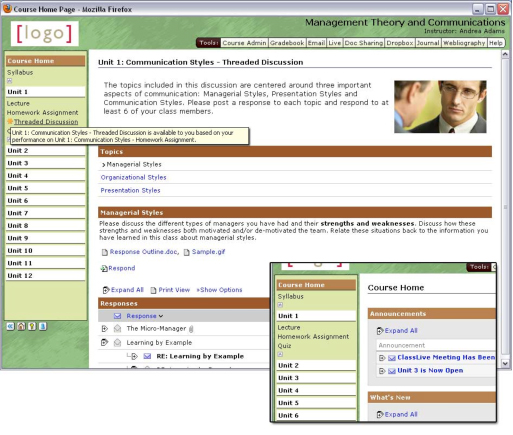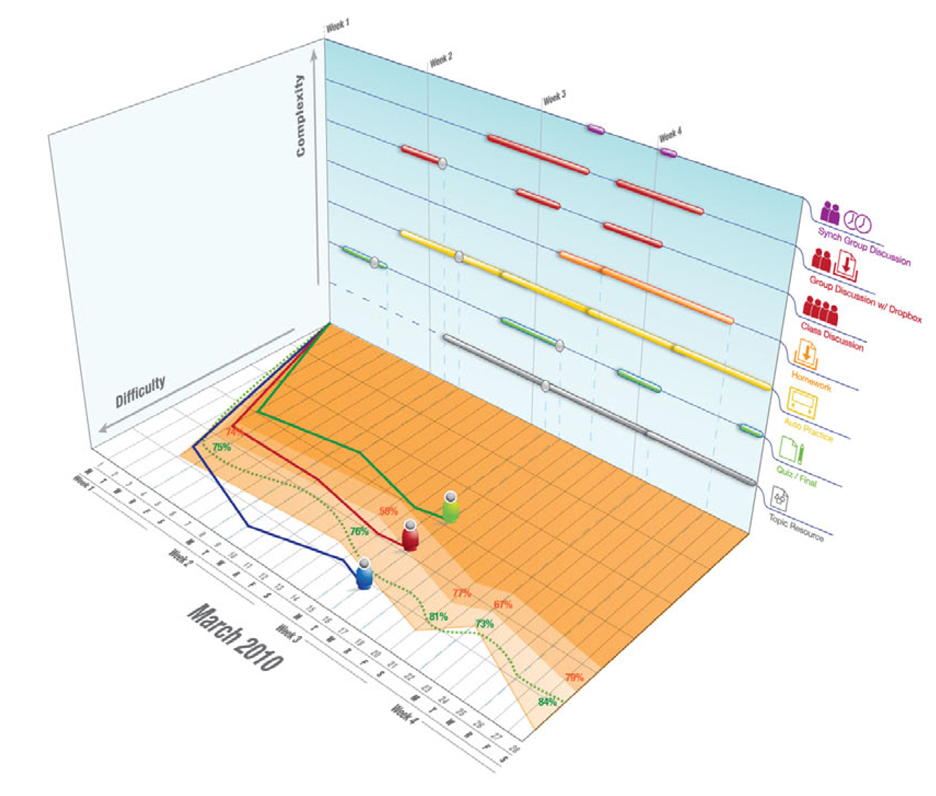While serving as Product Manager for two agile development teams building Learning Outcomes Manager (LOM), I took another project to create a “gating” tool, also known as a “selective or adaptive release” tool for Pearson’s LearningStudio LMS. The tool allows administrators or instructors the ability to set performance conditions that grant or deny a student’s access to particular locations within a course. The simple, first iteration of the tool tracked whether the student had submitted a paper, replied to a threaded discussion topic, or earned points on a quiz above a specified cut-score.
Here is a close-up of the conditional access set-up for instructors.
Here is a user interface mock of options for a “locked” item in the course based on a student’s performance in the class to date. Notice the Unit 1 threaded discussion is locked and invisible to the student in the picture inset.
If you take the concept of “conditional access” or an “adaptive course” to its inevitable conclusion, you’ll realize there must be a unique course outline and set of content (learning path) for each and every student, and furthermore, the outline needs to adapt to the student over time based on previous performance. This is a perplexing problem for learning management systems today, as they still focus on one set of content for an entire classroom – faculty-focused, more so than student-focused. As a learning designer, I had the luxury to think ahead. What would the online world look like if every student had their own course? How would an instructor create the appropriate environment for each and every student?
Can you imagine a day when computers and instructors can dial-up and dial-down (in real-time) the relative-rigor level for each student? I originally created the 2-D version of the 3-D diagram shown here to explain how an LMS can set-up a course per student, a foundation for managing individualized learning: (c x d) + (c x d)…/ t = I; or, complexity of the environment times the difficulty of the content, over time, equals intensity. In other words, we can assign an intensity value to each point in time or timeframe within a course, and by centralizing data and recording student performance scores over time, we can compare the scores to the instructor’s pre-set intensity levels. In turn, providing insight into which courses (or parts of a course) are too intense or not intense enough for the average student. Compare an individual student performance profile to the average profile, or sub-set profile, to derive the relative-rigor rating for that individual.


